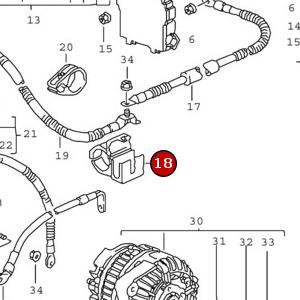I just stumbled on this thread, so I am going to reply, although a little late ;)
I suggest folks read this themselves: it is HIGHLY biased towards cross-drilling. AND it does not account for slotted or dimpled rotors or other engineered solid rotors. ONY completely solid ones (see the picture on page 24) and p.23 where they admit they didn't even look at slotted or dimpled rotors). It is unclear what types of venting/vaning the solid rotors they used have - if any!
Because of these fundamental issues, it is easy to find snippits favorable to cross-drilled rotors in the article - but only as they are compared to generic solid rotors. Again, ONLY completely solid rotors, and not race rotors with slots / dimples / vanes / vents, etc. [Note that there is plenty of discussion about the vaned design of the x-drilled - but almost no discussion on the type or design of the solid rotor. Clearly a Brembo (or other) solid rotor will operate better than less "engineered" models.] Despite the fact that they used junk solid rotors, there were still a number of points favorable to the non-crossdrilled rotors they tested!
High Performance Wear Test - conclusion: higher apparent friction levels for non-crossdrilled rotor during the 450 deg C wear test.
High Speed Abuse Test - brake system 3b had higher brake system output with smaller diameter, non crossdrilled rotors than system 3a with the larger diameter crossdrilled rotors.
Life - adding crossdrilling to the rotor design "reduces its fatigue life." This will occur at a lower number of heat cycles than ... a solid rotor. [i.e., cross drilled rotors die faster]
[There are others, but these are kinda neat]
Also, keep in mind that their test does not accurately represent real world use. For example, the tests were not dramatically affected by pad build up in the holes. This will severely change the results, since the ENTIRE premise of the article is that the holes help. In fact - they indicate that OVER 90% of the hole will clog under use! [brake system 1, full. Brake system 2, 90%.] They also state that this can have really bad results. [This also illustrates that new pad technology does NOT need the holes for venting gas.]
I also direct your attention to one of the most important conclusions - design affects performance. System 1 and 2 showed better performance with x-drilled, but system 3 showed better performancewith solid. But, what would happen with a properly designed rotor?
The closing statements of this article details the many negative affects of using cross drilled rotors. But I want to emphasize that the data presented is only a few data points regarding completely solid vs crossdrilled rotors. NOT crossdrilled vs track/slotted/dimpled/etc rotors.
Also, please refer to the more recent technical articles on the SAE site. There is a great one on Race Braking Technology (ca 2008). That one states you can improve brake cooling "through rotor design, cooling ducts ... and in some cases rotor crossdrilling can improve cooilng, but at the expense of lining wear rates" (not "in all cases"). This paper also talks in depth about brake fade.
There are a few other papers out there, but I have not read any more relevant that I can remember.
-td











